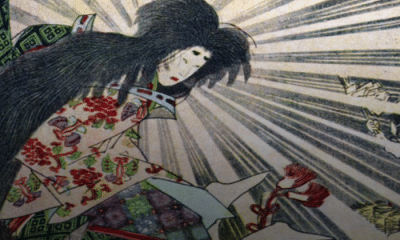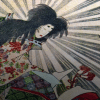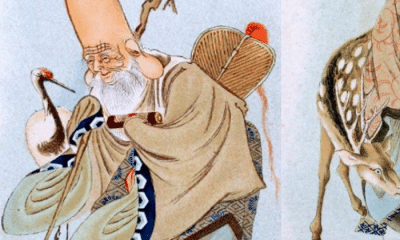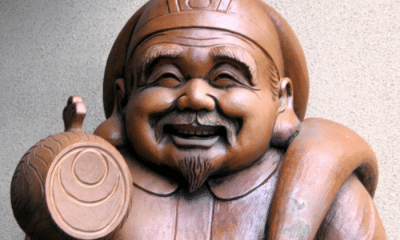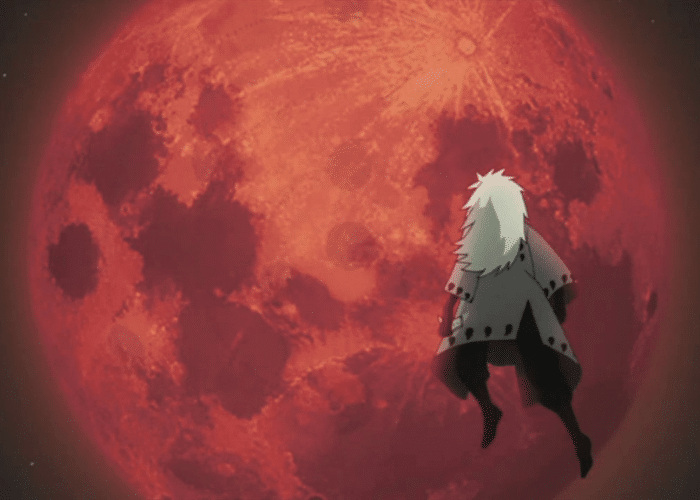
Japanese
Who Was Tsukuyomi in Japanese Mythology?
Who Was Tsukuyomi in Japanese Mythology?
The story of Tsukuyomi in Japanese mythology explained how the day and night were separated, but he and his wife were unlike any other pair in the world!
In Japanese mythology, Tsukuyomi-no-Mikoto, who is often simply referred to as Tsukuyomi, was the god of the moon.
This was rare in ancient cultures; it was far more common for the moon to be personified as female. Even more unusually, the Japanese saw the sun as being a goddess of great power.
The two were siblings and, according to many sources, married. They would not remain together, however, because Tsukuyomi committed a terrible act to promote his idea of proper etiquette and order.
Tsukuyomi’s crime was so horrible that his wife declared him to be a being of evil and banished him forever. The moon would always chase the sun, never able to catch her, because of Tsukuyomi’s crime.
Tsukuyomi the Moon God
Tsukuyomi’s name is commonly translated as “Moon Reading” or “Moon Watching.”
Tsuku can be translated as “month” as well as referring to the moon itself. Tsukuyomi’s name reference the way in which the moon was used to mark the passage of time.
Moon reading was a popular pastime in the court of Imperial Japan in which nobles would read poetry and gaze at the moon during parties that lasted through the night.
While this was a serene pastime for the nobility, Tsukuyomi himself was often regarded as less peaceful.
While he valued order and etiquette, he would go to extreme lengths to enforce these ideals. He would even kill, a violation of etiquette itself, to ensure that proper order was maintained.
This strict belief in maintaining etiquette at all costs is the basis for Tsukuyomi’s most well-known myth.
The moon god was married to his sister, Amaterasu, who was the goddess of the sun. They were born from the eyes of Izanagi, the creator god, when he was purified after his journey to the Underworld.
Izanagi proclaimed that they, along with Susanoo who had been born from his nose, were the most important kami and would rule the heavens. Susanoo was eventually sent to Yomi, the Underworld, while Amaterasu and Tsukuyomi ruled together.
One day Uke Mochi, the goddess of food, invited all the kami to a great feast at her palace. Amaterasu was not able to attend so she sent Tsukuyomi to represent both of them.
When Tsukuyomi saw how Uke Mochi prepared food for her guests, however, he was disgusted. She spat venison, fish, and rice from her mouth and then began to pull food out of other parts of her body as well.
To Tsukuyomi, this display was a major breach of etiquette. Unwilling to abide this, he killed Uke Mochi on the spot.
When Amaterasu learned what her husband had done, she was furious. She declared that his actions made him evil and he was no longer worthy of ruling beside her or even entering Heaven.
The sun goddess and the moon god were separated forever and Amaterasu constantly fled while Tsukuyomi tried to get close to her. This explained day and night and why the sun and the moon appeared at different times but followed similar paths across the sky.
The story also explains how humans came to grow and hunt food for themselves. After Uke Mochi’s death, the gods found food coming out of her body and gave it to humans to cultivate for the future.
My Modern Interpretation
With Susanoo ruling in Yomi and Tsukuyomi banished, Amaterasu was left in the position of sole ruler of Heaven in Japanese mythology. This was unusual for many reasons.
The mythology of Japan is one of few from around the world in which a female character is seen as the supreme deity.
It is also relatively rare for the sun to be seen as female and the moon as male. Typically the sun, stronger and more prominent, was cast as a god while the moon, which had softer light and a cyclical nature, was female.
Japanese mythology is consistent with other rare examples of a sun goddess and moon god, however, by making the characters siblings. One of the few other prominent examples of this, Sól and Máni in Norse mythology, are also siblings.
Some historians in the past were so unused to this depiction that they believed Tsukuyomi may not have been male.
Not all myths portray Tsukuyomi and Amaterasu as a married couple. In the past, some Western readers believed that Tsukuyomi was a female character who was sent to Uke Mochi’s feast as a subordinate rather than as Amaterasu’s consort.
This is disproven, however, by the more definite wording of other surviving sources. The oldest known Japanese source calls the moon deity Tsukuyomi Otoko, or “Moon Reading Man.”
Some sources still disagree on whether or not Tsukuyomi was the goddess’s consort. Some describe her as virginal, despite the fact that she had several sons, while a few historians believe that she may have once been associated with a more powerful, but unknown, solar god.
Even in cases in which Tsukuyomi is believed to have been Amaterasu’s husband, however, it is not clear whether he fathered her children.
Many prominent Japanese families, most notably the Imperial family, claim descent from one of Amaterasu’s sons. Few, however, claim that Tsukuyomi is their ancestor.
This may be, in part, to strengthen their claim to rulership. Amaterasu was said to have been the first of Izanagi’s three children so she had the strongest claim to the throne of Heaven.
Through most of Japanese history, however, a son would have still been first in line for power among human leaders. Instead, it is most likely that Tsukuyomi’s actions made him an undesirable ancestor.
Tsukuyomi’s belief in propriety was commendable, but the lengths that he would go to in order to enforce that belief were not.
He was expelled from Heaven and seen as dangerous not only because of his zealotry, but also because he violated etiquette by attacking his hostess while he was a guest. He also betrayed Amaterasu by committing such a terrible action as her representative.
Even if Tsukuyomi was the sun goddess’s consort, therefore, the human rulers who claimed descent from her would not have wanted to call him their forebearer. His actions made him worthy of such great scorn that later generations could have been judged by them.
Some temples to Tsukuyomi were built in Japan, but he never had a strong following. Folklore and the Shinto religion largely regard him as a negative figure because he broke sacred laws to enforce his own view of propriety.
This characterization has continued in modern media. Like many Japanese kami, Tsukuyomi is a popular source of inspiration in many anime shows and video games.
There, too, he is largely seen as a negative force. The name Tsukuyomi is familiar to non-Japanese people today as a character that usually represents darkness and destruction in opposition to the light and creation of the sun.
In Summary
Tsukuyomi-no-Mikoto, usually referred to simply as Tsukuyomi, was the Japanese god of the moon.
He was the sibling, and likely the consort, of the sun goddess Amaterasu. His most well-known myth explains how the two were separated, leading to the division between day and night.
Tsukuyomi was characterized as being zealous in his interpretation of etiquette and the law. His interpretation of propriety was ironic as he broke the rules of proper behavior to punish those he thought were in the wrong.
According to legend, Tsukuyomi was sent to represent his sister at a feast given by Uke Mochi, the goddess of food. When he saw that the food was pulled out of her body, however, he was so disgusted that he killed his hostess.
For this act of violence, which was particularly heinous because he had been Uke Mochi’s guest, Amaterasu banished her brother from Heaven. The moon continuously chased after the sun but could not exist alongside it because of this.
Tsukuyomi is a rare example of a moon god in ancient mythology. Most lunar deities were female, while the sun was cast as a male god.


